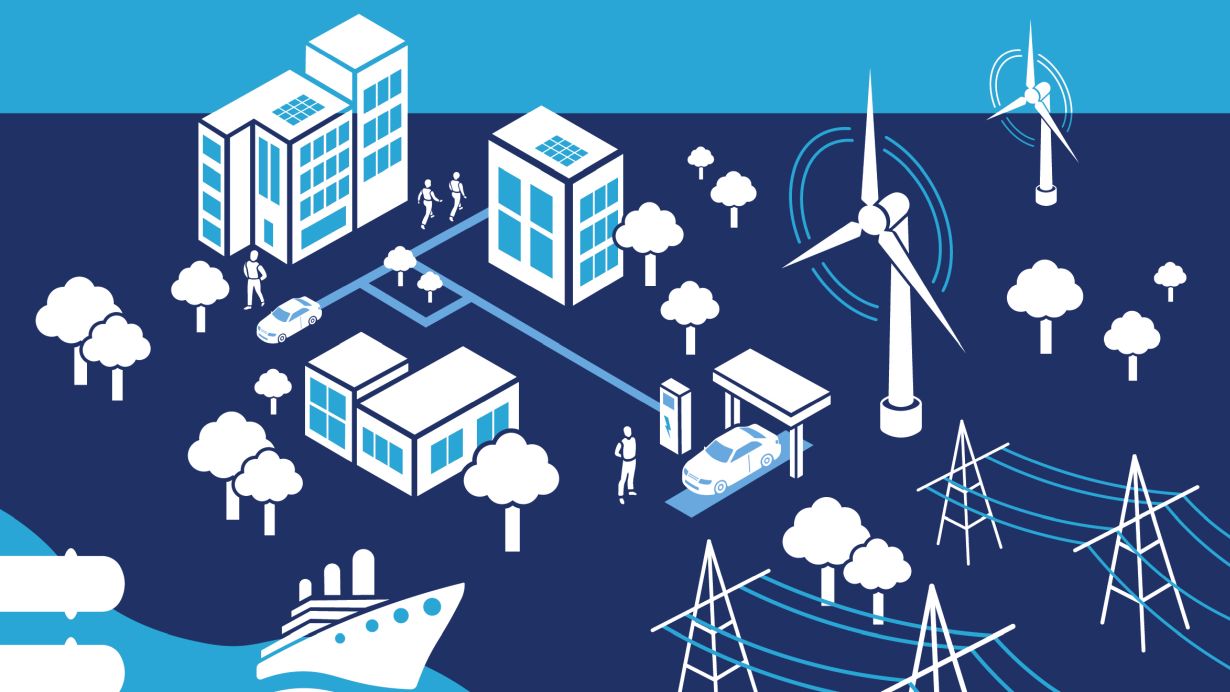Germany aims to implement the energy transition by 2045. Researchers from the Karlsruhe Institute of Technology (KIT), the German Aerospace Center (DLR) and Forschungszentrum Jülich (FZJ) have outlined how the energy system can be transformed successfully. In a policy briefing, the Helmholtz Association scientists analyze possible future scenarios, taking ecological, economic, institutional, organizational and social aspects into consideration.
“Socio-technical energy scenarios and an assessment of their effects in terms of sustainability are at the heart of our analyses,” said Jürgen Kopfmüller of KIT’s Institute for Technology Assessment and Systems Analysis. “With these analyses, our goal is to provide policymakers with a good decision-making basis for the transformation of our energy system to one that is sustainable and carbon-neutral.” According to Kopfmüller, the integrative approach does better justice to the issue’s complexity than many scenarios currently under discussion.
Focus on Electrification
The authors, who prepared the briefing for the Helmholtz Energy System Design (ESD) program, advise against basing future energy scenarios solely on demographic and economic developments, which in their view are difficult to predict. Global events such as conflicts or the development of the EU affect immigration and population trends just as world markets affect Germany’s economy. Energy needs will differ significantly from one scenario to another.
“The electrification of production and transportation processes should be at the heart of future strategies. We need spatial and temporal flexibility in the electricity sector, presumably supplemented by the use of green hydrogen, most of which will be imported,” said Professor Patrick Jochem of DLR’s Institute of Networked Energy Systems. Transforming the heating sector, on the other hand, would require a combination of energy-efficient building refurbishment, a change of energy source, and expansion of electricity and heating grids, he added.
As a result of electrification, electricity demand could rise from the current level of approximately 600 terawatt-hours to between 1,100 and 1,300 terawatt-hours by 2045. “Power generation from renewable sources must be accelerated in Germany,” Jochem said. “In our scenarios, we see a need to increase installed capacity to 370 to 435 gigawatts for photovoltaics, 210 to 220 gigawatts for onshore wind, and 53 to 70 gigawatts for offshore wind by 2045. That’s more than three times today’s installed capacity, but that wouldn’t mean quadrupling the number of systems since the existing ones could be upgraded.”
Considering Stresses and Side Effects
Expanded power generation should be coupled with the construction of infrastructure for effectively managing carbon dioxide storage or processing. As things stand today, the authors forecast that greenhouse gas emissions will remain unavoidable in the future, particularly in agriculture and industry. Suitable strategies will be needed to meet the rising demand for critical raw materials such as lithium, cobalt and nickel in an environmentally friendly way while minimizing geopolitical risks.
“Overall, the transformation strategies we analyzed will increase domestic value creation,” said Dr. Stefan Vögele of the Institute of Climate and Energy Systems – Jülich Systems Analysis. Jobs in energy-intensive industries would presumably move elsewhere but would not necessarily be lost. “But to avoid endangering acceptance for the energy transition, government will also need to ensure that additional burdens on low-income households are minimized,” Vögele added.
Integrative considerations on energy transition” policy brief
In close partnership with society, KIT develops solutions for urgent challenges – from climate change, energy transition and sustainable use of natural resources to artificial intelligence, sovereignty and an aging population. As The University in the Helmholtz Association, KIT unites scientific excellence from insight to application-driven research under one roof – and is thus in a unique position to drive this transformation. As a University of Excellence, KIT offers its more than 10,000 employees and 22,800 students outstanding opportunities to shape a sustainable and resilient future. KIT – Science for Impact.

